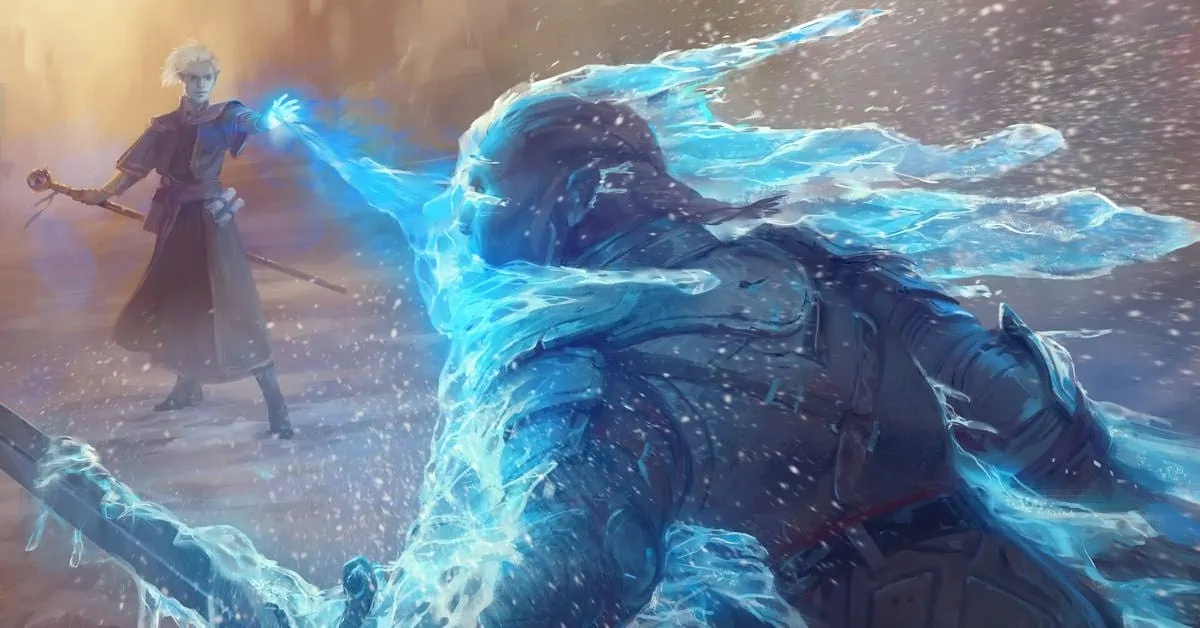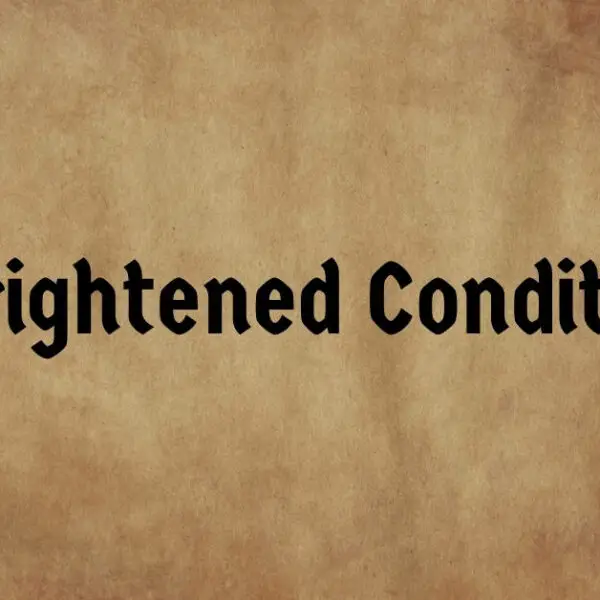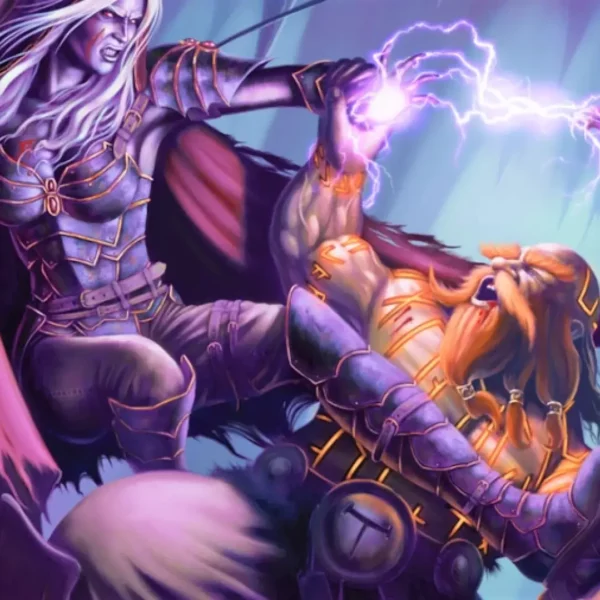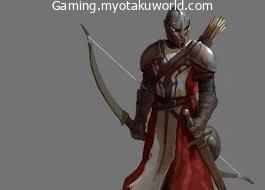Near the summit of a mountain, you and your party have set up camp. The wind chills you to the bone, but from this vantage point you can see far into the valley and catch your foes coming up behind them.
As the night falls, the most observant members of your group see a brief flame far down the mountain.
You can’t make out their faces, but they’re camped out right behind you in large numbers. While they are blind to your party’s advantage, you can still figure out where they are sitting from your vantage point.
There was a short discussion among the group about whether or not it would be preferable to have the fight right now or wait until the morning. You’ve all come to a conclusion, at last. Now is the time to fight while you have the upper hand.
You position yourself at an angle from which you can survey the entire assembled crowd as the battle begins. It is up to you, as the wizard, to fire the opening salvo.
When you’ve cast your first spell, you can take cover while your allies charge in and continue casting spells from a safe distance.
You make a hand gesture and whisper a word, and three rays of fire shoot from your fingertips, streaking down the mountainside and landing just 200 feet away from where you started.
Scorching Ray’s bolts hit their mark, and the fight begins. An official Spell Sniper 5e Guide.
Up Front
Spell Sniper is worth it for your party’s weaker members, spellcasters, and long-range fighters, even though you usually have to choose a Feat instead of an Ability Score Improvement when you level up.
The only exception is a Variant Human, who gets a Feat when they are made. As a bonus, anyone who can cast at least one spell can take the Feat.
What Does It Do?
Spell Sniper is a Feat that lets players who can cast at least one spell use certain spells more effectively.
When you cast a spell with an attack roll, the range is doubled because of this enhancement. Ranged spells also don’t care about half cover or 3/4 cover.
When you take this Feat, you can also learn one cantrip from the spell lists of Bards, Clerics, Druids, Sorcerers, Warlocks, and Wizards that requires an attack roll.
The change to your spellcasting ability for the cantrip you chose depends on which list you chose it from.
Charisma affects how well Bards, Sorcerers, and Warlocks cast spells. Cantrips used by Clerics and Druids are changed by Wisdom. Your Intelligence is used to cast cantrips from the Wizard spell sheet.
Cantrips That Can Be Yours Today
Cantrips are “no-level” spells, which means you don’t need a certain level or spell slot to use them. The spell can be used at any time and doesn’t have to be made ahead of time.
Attack cantrips can be lifesavers for both low-level and high-level players. They can save spell slots for the most important times or help melee attackers when they can’t get close to their enemies.
It’s important to remember that not all of the cantrips you can use with the Spell Sniper Feat require ranged attack rolls.
Spell Sniper’s only rule about which cantrips you can use is that they need an attack roll. Cantrips like Booming Blade require an attack roll, so you can use them whether or not Spell Sniper makes them better.
| Blooming Blade | Sorcerer, Warlock, and Wizard are classes. When you cast this spell on yourself, you make a magical weapon that you can use for one round. Attack a creature that is within five feet of you. When this weapon hits its target, it does what it usually does and covers it in booming energy until the start of your next turn. If the target moves 5 feet or more on their own before your next turn, the spell ends and they take 1d8 thunder damage. |
| Chill Touch | Sorcerer, Warlock, and Wizard are classes. Range: 120 feet (240 with Spell Sniper) When you cast this spell, a ghostly skeleton hand appears in the space of a creature within range. You cast a spell from a distance. If it hits, the target takes 1d8 necrotic damage and can’t heal until the start of your next turn. If you hit an undead target, it will be less likely to hit until the end of your next turn. |
| Eldritch Blast | Warlock is a class. Range: 120 feet (240 with Spell Sniper) You send a crackling beam of energy at a nearby creature. If you hit it with a ranged spell attack, it takes 1d10 force damage. |
| Firebolt | Sorcerer and Wizard are classes. Range: 120 feet (240 with Spell Sniper) You send a spark of fire at a target that is close enough. If your long-range attack hits, 1d10 fire damage is done to the creature. If a flammable thing isn’t being worn or carried, it will catch fire. |
| Green-Flame Blade | Sorcerer, Warlock, and Wizard are classes. Cast on yourself Like the Booming Blade spell, this one makes a magical weapon appear in your hand. You can use it to attack a creature or target within 5 feet of you with a melee attack. When an attack hits its target, it does what it’s supposed to do. Also, you can make green fire jump from the target to any creature within five feet of the target that you choose. Fire damage equal to your ability modifier to cast spells will be done to the second creature. |
| Magic Stone | Druid and Warlock are classes. Range: Touch You touch up to three pebbles and give them magic to cast this spell. You or someone else can use the pebble to cast a spell from a distance by throwing or slinging it. It can be thrown up to 60 feet (120 feet with Spell Sniper!) If someone else throws your pebble, your spellcasting ability modifier is added to the attack roll instead of their attack modifier, but the range of the attack is not doubled. If you hit your target, they take damage equal to 1d6 + your modifier from the blow. The spell on the stone ends there. |
| Produce Flame | Classes: Druid Range: 30 feet when thrown by self (60 with Spell Sniper). When you cast this spell, a flame that flickers in your hand won’t hurt you or your gear. It gives off bright light in a 10-foot circle and dimmer light in another 10-foot circle. If you use the flame to attack, the spell will end. You can throw the flame at a creature within 30 feet (60 with Spell Sniper) and make a ranged attack roll. The target takes 1d8 fire damage when hit. |
| Ray of Frost | Sorcerer and Wizard are classes. Range: 60 feet (120 with Spell Sniper) For a ranged spell attack, you send a beam of light that freezes your target towards it. If you hit your target, it takes 1d8 cold damage and can’t move as fast until your next turn. |
| Shillelagh | Classes: Druid Range: Touch The power of nature is in the club or quarterstaff you hold. Your weapon’s damage changes to a d8 and gets a magical effect right away. For the duration of the spell (one minute), you can use your ability to cast spells instead of your Strength when rolling for damage and attacks. |
| Shocking Grasp | Sorcerer and Wizard are classes. Range: Touch When you grab a creature, lightning shoots out of your hands and shocks it. You must make a melee spell attack, and if the creature you’re grabbing has metal armour, you have an advantage. If you hit, your target takes 1d8 lightning damage and can’t act until the start of its next turn. |
| Thorn Whip | Classes: Druid Range: 30 feet You make a long, thorny vine that looks like a whip. You must make a melee spell attack against your target. If you hit, the creature takes 1d6 piercing damage. If the creature is bigger or smaller than you, you can pull it 10 feet closer. Spell Sniper can’t work on this spell because it is a melee attack, not a ranged one. |
Though it’s interesting, none of the classes are Bard. Even though you can take a cantrip from the Bard’s list of spells, none of them require attack rolls, so you can’t take anything.
If you look through the Player’s Handbook’s list of cantrips, you’ll see that all Bard cantrips that can do damage require saves from the target instead of an attack roll.
Which Cantrip is Best?
Avoid melee cantrips if you want to get the best one for this Feat. Spell Sniper won’t make them better, but you could pick them if you wanted to.
If you don’t have any other ranged spell attacks, you may find the Feat to be completely useless. Chill Touch, Eldritch Blast, and Firebolt would be my top three choices.
Spell Sniper gives them a range of 240 feet, and no matter what level you are, these spells can do a lot of damage. At level 17, Chill Touch can do up to 4d8 damage, which means it can do a maximum of 32 damage with a single use.
At level 17, Firebolt can do 4d10 damage, which means that a single use can do 40 damage. At level 17, Eldritch Blast has four blasts that you can aim at different targets.
Each blast does up to 40 damage. As an added bonus, these powerful cantrips don’t care about partial cover. This makes them even more dangerous.
Not All Spells
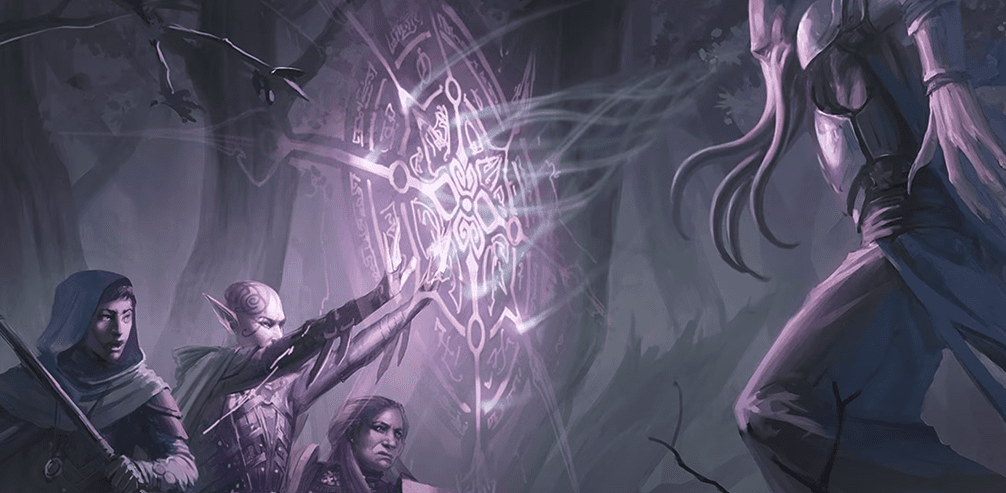
Even though it might be tempting to try to use Spell Sniper on all of your spells, you can’t. Who wouldn’t want to be able to send a Fireball to an enemy that is more than 300 feet away?
Unfortunately, if you want to double the range of your attack rolls, your spell must be a ranged attack, not a save.
This raises the important question of which spells the Spell Sniper Feat affects. A lot of spells, besides the cantrips I already listed, are affected by this Feat. I’ll list them all below.
| Acid Arrow | Evocation level 2 Range: 90 feet (180 feet with Spell Sniper) Damage is 4d4 when it hits and 2d4 at the end of the next turn of the target. If the attack misses, the damage is cut in half and the target takes no damage at the end of its next turn. |
| Blade of Disaster | 9th-level spell casting Range: 60 feet (120 with Spell Sniper) Damage: 4d12 force damage. If you roll an 18 or higher, you get a critical hit. When this spell hits with critical force, it does an extra 8d12 damage, for a total of 12d12 damage. |
| Chaos Bolt | 1st-level evocation Range: 120 feet (240 with Spell Sniper) Damage: 2d8 + 1d6 damage. The type of damage is chosen by rolling a d8 and looking at the damage chart. |
| Chromatic Orb | 1-st level evocation Range: 90 feet (180 with Spell Sniper) You can choose what kind of damage 3d8 does. Before you attack, you can choose to do damage with acid, cold, fire, lightning, poison, or thunder. |
| Crown of Stars | 7th-level spell casting Range: 120 feet on your own (240 feet with Spell Sniper) when you use the stars. Damage: 4d12 radiant damage per mote, seven total motes. |
| Guiding Bolt | 1st-level evocation Range: 120 feet (240 with Spell Sniper) Damage: 4d6 radiant damage. |
| Ice Knife | 1st-level conjuration Range: 60 feet (120 with Spell Sniper) Whether you hit or miss, the damage is 1d10 piercing damage plus 2d6 cold damage if your Dexterity saving throw fails. |
| Ray of Sickness | 1st-level necromancy Range: 60 feet (120 with Spell Sniper) The target takes 2d8 poison damage and must make a Constitution save. If the target fails the save, the poison effect stays on them until the end of your next turn. |
| Scorching Ray | Evocation level 2 Range: 120 feet (240 with Spell Sniper) Damage: Each of the three rays of fire does 2d6 fire damage, for a total of 6d6 damage to one target or spread out over multiple targets. |
| Spiritual Weapon | Evocation level 2 Range: 60 feet at first cast, 120 feet with Spell Sniper, and you can move 20 feet as a bonus action (40 with Spell Sniper). Damage is 1d8 + your ability modifier for casting spells. |
| Steel Wind Strike | 5th-level spell casting Range: 30 feet (60 with Spell Sniper) Damage: 6d10 force damage |
| Storm Sphere | Level 4 of evocation Range: 150 feet (300 with Spell Sniper) Damage: 4d6 lightning damage |
| Wall of Radiance | Level 5 of evocation Range: 120 feet (240 with Spell Sniper) If a creature is in the area when the spell is cast, that creature must make a Constitution saving throw. If the creature fails the roll, it takes 4d8 damage. If it makes a save, it only takes half as much damage. A creature that ends its turn in the area of the wall takes 4d8 radiant damage. You can use an action to fire a beam of radiance from the wall at a creature up to 60 feet away (120 feet with Spell Sniper! ), dealing 4d8 radiant damage. |
| Witch Bolt | 1st-level evocation Range: 30 feet (60 with Spell Sniper) If it hits, it does 1d12 points of lightning damage. After that, you can do 1d12 damage right away every turn as long as the target is still in range. |
Taking the Feat and the Loopholes
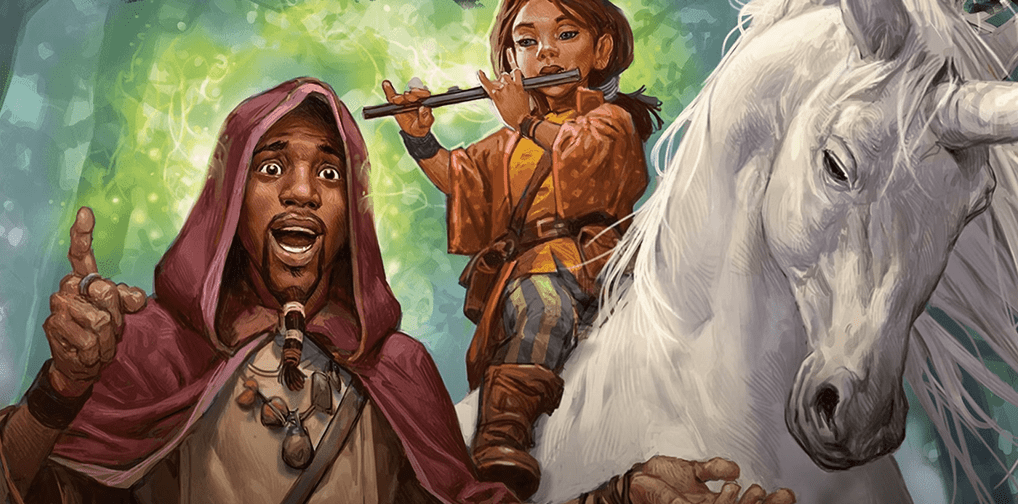
Unless you are a Variant Human, level four is usually when you can take your first feat. But you don’t have to be a magic class to take Spell Sniper as your first or even second Feat.
The Player’s Handbook says that you only need to be able to cast at least one spell to take the Spell Sniper Feat.
This gives us a way out that may or may not be worth it: anyone with innate magic can take the Spell Sniper Feat and learn the cantrip that goes with it.
But you can still get the Spell Sniper Feat even if you don’t play a race with racial magic. Your first step will just be a little different from your magical counterparts.
If your character doesn’t have magic built into them, I suggest taking the Magic Initiate Feat as your first magic-related Feat.
This Feat gives you not only two cantrips, but also the first-level spell. More importantly, this Feat gives you spells and doesn’t require you to know how to cast spells before you take it.
Races with Innate Magic
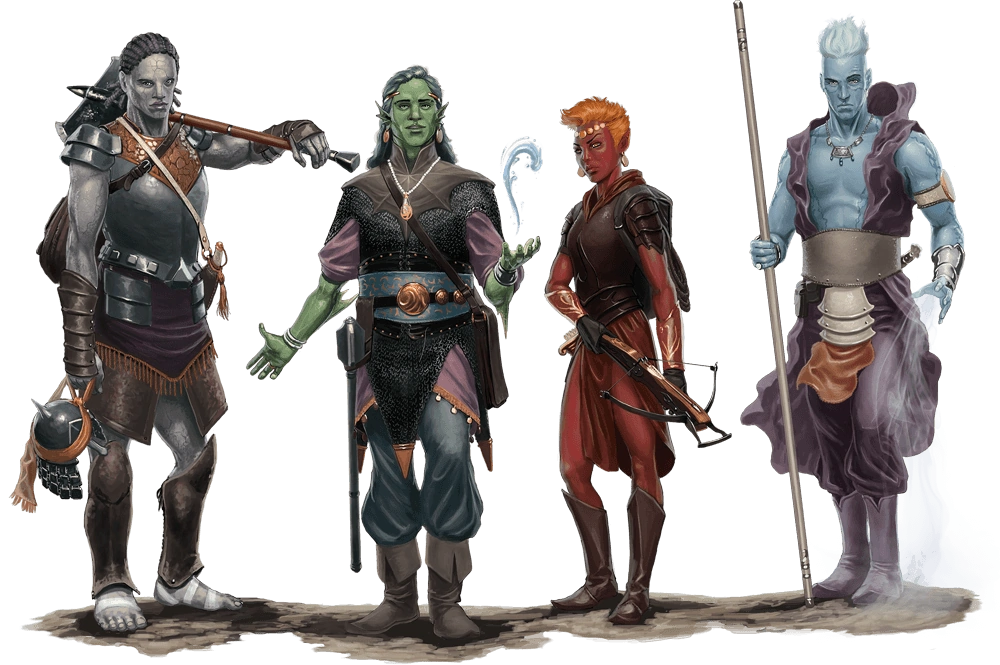
But if you want to take the easy way out and not have to worry about taking the right Feat while not being a magic class, here are a few races that have magic built in.
| Air Genasi | Air Genasi can use their Constitution as their spellcasting ability to cast levitate once every long rest. They don’t need any materials to do this, and it doesn’t cost them anything. |
| Drow | The Dancing Lights cantrip is built into a drow’s mind. Once a Drow reaches level 3, they can cast Faerie Fire once every long rest. At level 5, Drow can use Darkness once every long rest. Charisma is the skill used to cast spells for all Drow magic. |
| Earth Genasi | Pass Without a Trace is a spell that Earth Genasi can use once every long rest. It doesn’t need any materials to work. Their ability to cast spells is based on their Constitution. |
| Fire Genasi | Fire Genasi can use the Cantrip Produce Flame. When they reach level 3, they can cast Burning Hands as a first-level spell once per long rest. |
| Forest Gnome | Forest Gnomes can use their Intelligence as their spellcasting skill to cast the Minor Illusion Cantrip. |
| Gray Dwarf | Gray Dwarfs, or Duergar, can use the Enlarge/Reduce spell on themselves once they reach level 3, but they can only use Enlarge. Gray Dwarves can make themselves invisible once every long rest once they reach level 5. Neither spell needs anything physical to work, and neither can be cast in direct sunlight, but sunlight won’t break the spell. Gray Dwarfs use their intelligence as their way to cast spells. |
| High Elf | High Elves can use their Intelligence as their spellcasting ability and know one cantrip from the Wizard spell list. |
| Tiefling | Tieflings know how to use the Thaumaturgy cantrip by nature. When they reach level 3, they can cast Hellish Rebuke once per long rest as a second-level spell. When Tieflings reach level 5, they can use Darkness once per long rest. Charisma is what they use to cast all of their racial spells. |
| Triton | Fog Cloud is a natural spell that Triton can use. When they reach level 3, they will be able to cast Gust of Wind. Triton can cast Wall of Water at level 5. The charisma skill is used to cast these spells, which can be used once per long rest. |
| Water Genasi | The Shape Water cantrip is built into Water Genasi. When they reach level 3, they can use Create or Destroy Water as a second-level spell once per long rest. A Water Genasi uses their Constitution to cast spells. |
For the Min-Maxers
Let’s say you don’t want to waste time on useless Feats and would rather just take the Ability Score Improvement. That makes sense, but you can still make your character stronger by using a Feat like Spell Sniper.
Spell Sniper not only doubles the range of your attack spells, especially cantrips, but also gives your character an advantage in battle if those spells are your main source of damage.
Spell Sniper makes it impossible for your enemies to hide in places where they can easily move around and hide, like in ruins or a forest.
Depending on how your DM runs the game, partial cover can either give your target a higher AC or make it harder for you to attack.
But if you have the Spell Sniper Feat, your attack spells and cantrips don’t care about that disadvantage at all. This makes ranged attacks fair.
FAQs
Why won’t Bardic cantrips like Vicious Mockery or Thunderclap work with Spell Sniper?
They don’t need to roll to attack. Even though the Feat description says you can take a cantrip from the Bard spell sheet, you can’t. As was already said, Bards don’t have a cantrip that requires an attack roll, even though they do have cantrips that can attack. Cantrips like Vicious Mockery and Thunderclap that can do damage require saving throws instead.
What other Feats would Spell Sniper pair best with?
Even though I’d like to say that War Caster would be the best match, it’s only good for keeping spell concentration and using spells as a quick attack. In reality, Magic Initiate is the best talent you could pair with Spell Sniper. With Magic Initiate, you learn two of a magic class’s cantrip spells and one of that class’s first-level spells. If you play your cards right, you can do a crazy amount of damage from far away with just cantrips.
My DM isn’t familiar with Feats, so they don’t want to let us use them at the table. How do I convince them to let me take one?
Talking to them is the best way. Look through the Player’s Handbook with your Dungeon Master and learn about Feats. You might want to tell your DM that they don’t have to keep track of your Feats either. It’s up to the players to remember whether or not they have a Feat and how it works. Feats are an important part of Dungeons and Dragons 5e, but it’s up to your Dungeon Master (DM) to decide if they’re part of the game or not. This is especially true if you try to use the innate magic loophole I talked about earlier.
